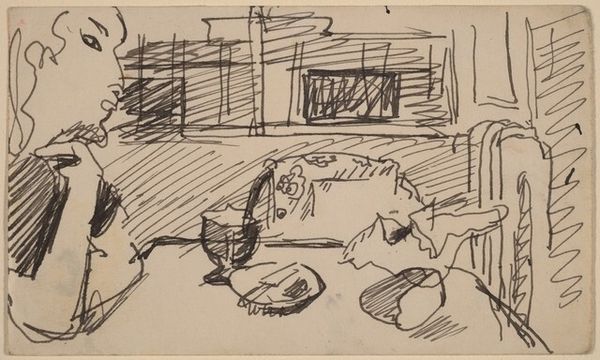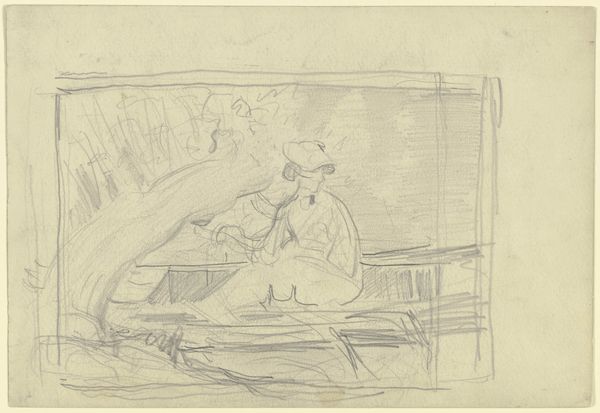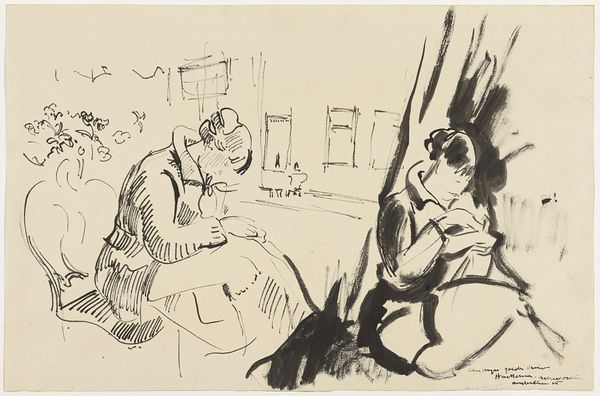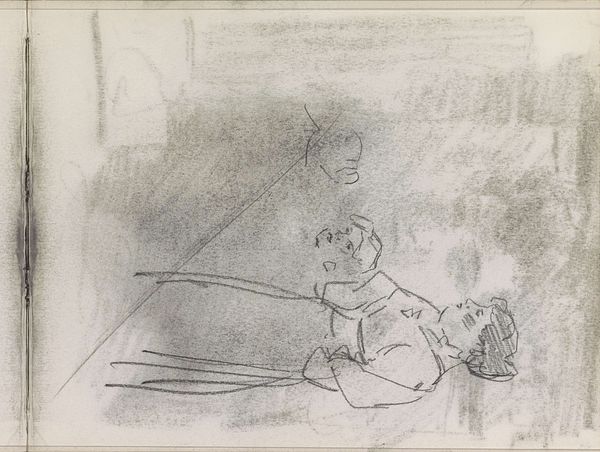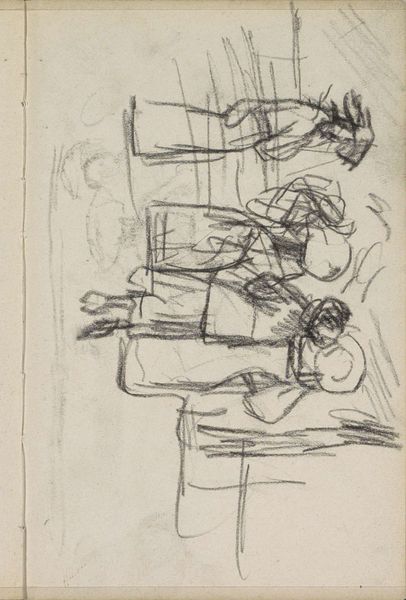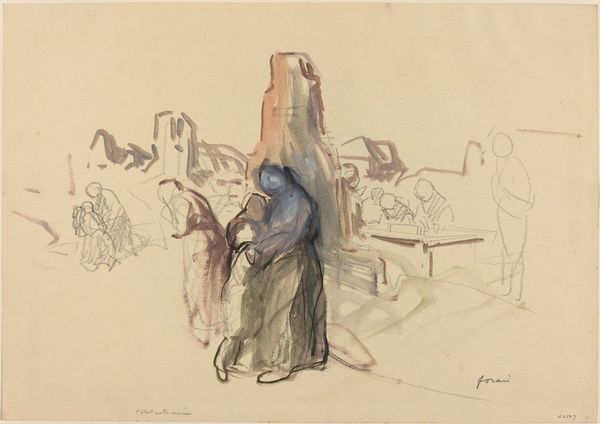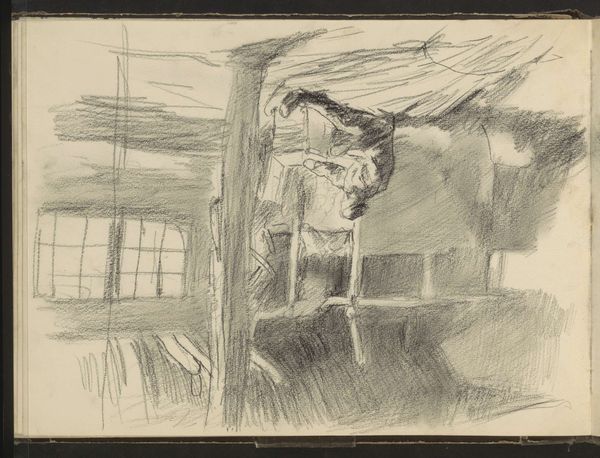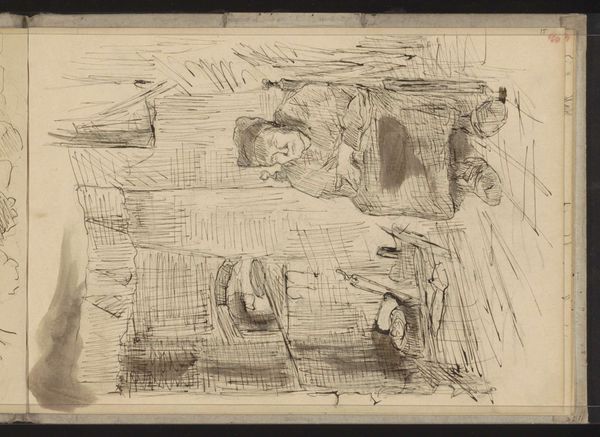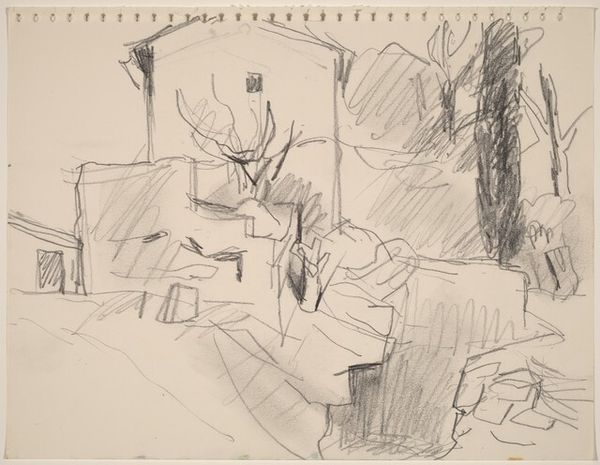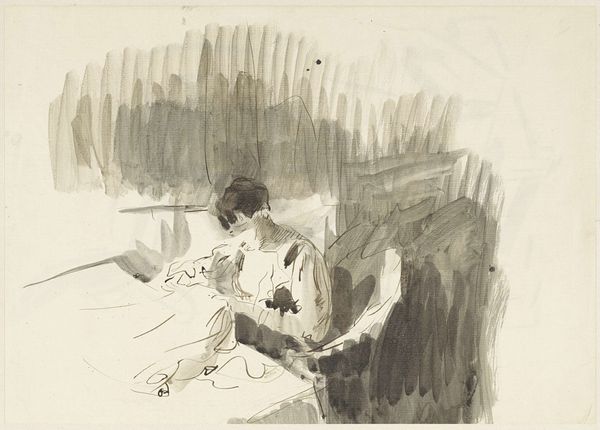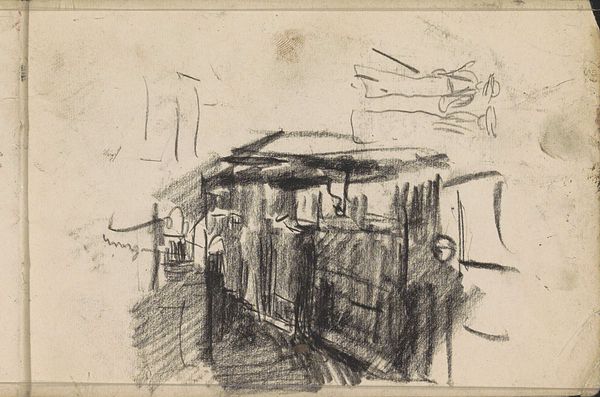
watercolor
#
figuration
#
watercolor
#
genre-painting
#
watercolor
#
realism
Copyright: National Gallery of Art: CC0 1.0
Editor: This is "Figure Standing Near a Counter," a watercolor work by Mark Rothko. It has an everyday feel, a sort of common scene—but the way the figures are rendered is loose and suggestive. How do you interpret this piece in light of Rothko’s better-known abstract expressionist work? Curator: Given the style we might assume it's early in his career. Its seeming embrace of "genre-painting" makes one wonder what social realities or cultural contexts may have compelled Rothko, known later for pure abstraction, to depict such a recognizable scene? Perhaps the influence of the Ashcan School, with its focus on urban life, lingered? How might prevailing exhibition practices, or even the tastes of specific patrons, have influenced this artistic choice early in his career? Editor: That's interesting—the market for "genre painting," maybe forcing him to conform early on. The thick strokes somehow don't seem entirely representational; it's like it’s on its way to becoming abstract. Curator: Exactly. Where and how might an artist like Rothko encounter the subject matter shown here, and how might those interactions influence its look? Perhaps this seemingly everyday scene is loaded with socioeconomic undercurrents or political undertones related to his social environment in the 1930's. Do you agree that the composition evokes a specific atmosphere related to economic conditions? Editor: It really makes me rethink Rothko's development. Seeing him grapple with figuration forces me to ask what drove his ultimate turn to abstraction, especially in light of his artistic context. Curator: Yes, we can trace how evolving cultural values surrounding representation might have incentivized abstraction and perhaps helped secure Rothko's legacy within influential institutional narratives that celebrated American innovation. A vital counterpoint when viewing art. Editor: Definitely makes you wonder who decided which artistic voices and styles became dominant and why. Curator: Indeed, this piece opens so many avenues for us to examine how social forces mold the trajectories of even the most iconic artists.
Comments
No comments
Be the first to comment and join the conversation on the ultimate creative platform.
